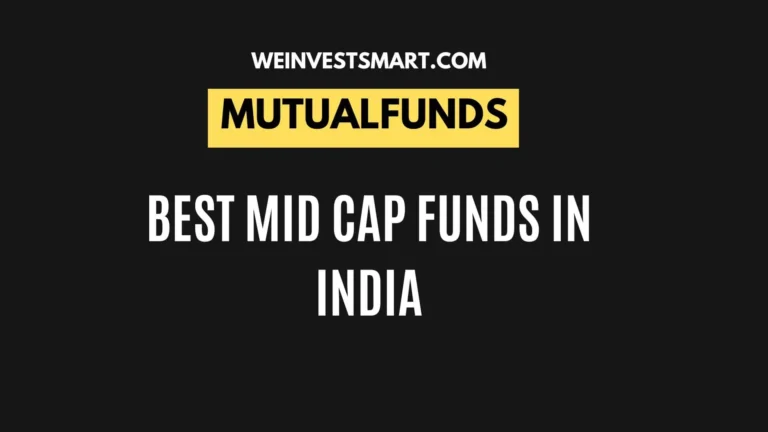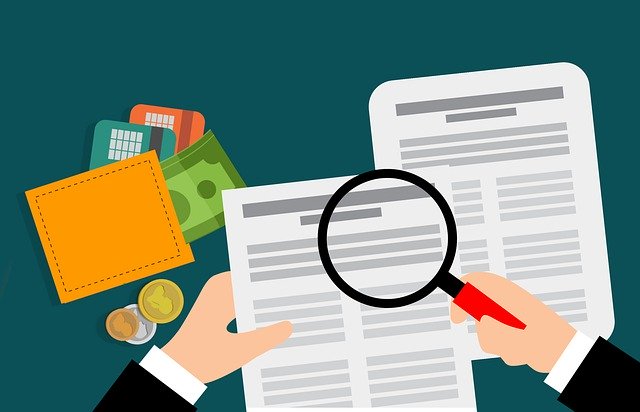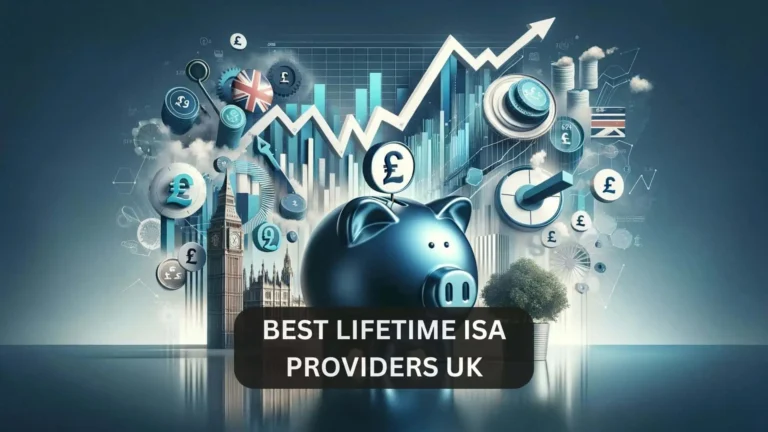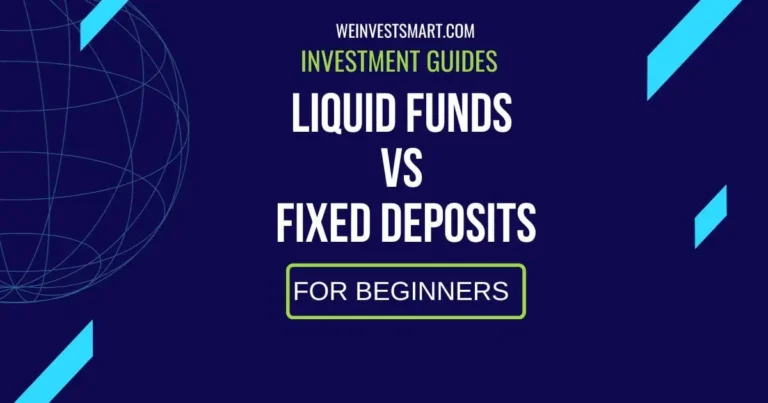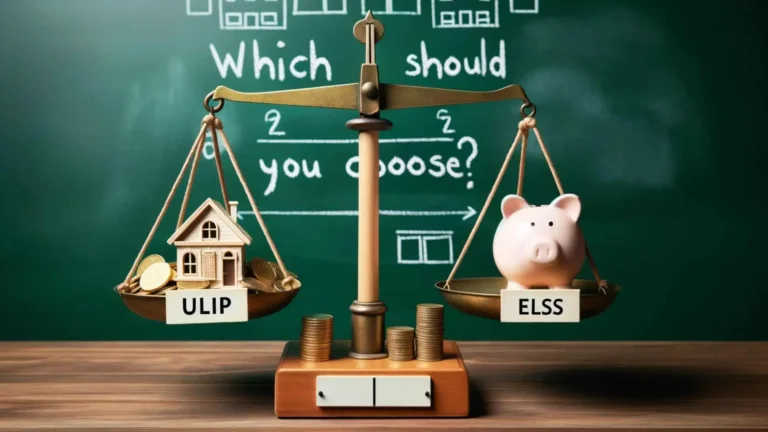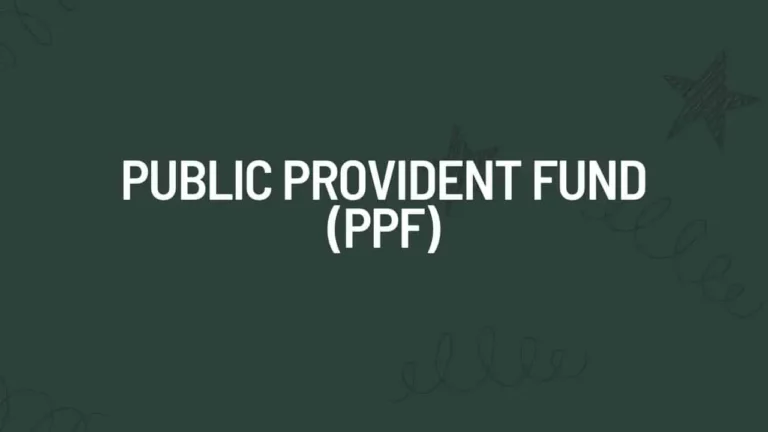PMVVY (Pradhan Mantri Vaya Vandana Yojana) – Benefits, Interest Rate, Returns Calculator, Advantages and Disadvantages
This post was most recently updated on November 30th, 2023
The Pradhan Mantri Vaya Vandana Yojana (PMVVY) is a government-backed pension scheme designed for senior citizens in India. Launched in 2017, PMVVY provides a guaranteed return on investment and a regular pension income for senior citizens. The scheme is administered by the Life Insurance Corporation (LIC) of India and is available for individuals aged 60 years and above.
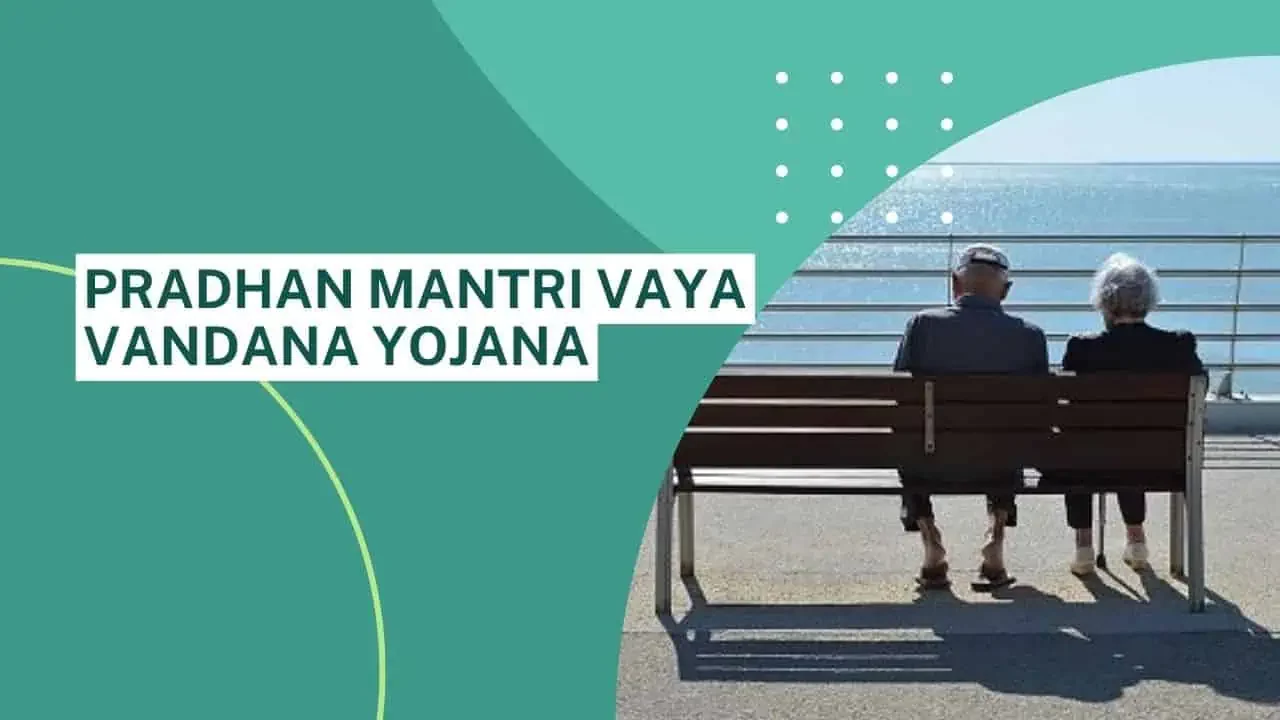
In this article, we will delve deeper into the Pradhan Mantri Vaya Vandana Yojana (PMVVY), its features, benefits, latest interest rate, Advantages, Disadvantages, and eligibility criteria.
The latest interest rate in 2023 for Pradhan Mantri Vaya Vandana Yojana (PMVVY) is 7.4%, which makes it an attractive investment option for senior citizens in India.
Consider reading: Senior Citizens Savings Schems (SCSS) – Latest Interest Rate and Details
Page Contents
Pradhan Mantri Vaya Vandana Yojana Key Details in 2023
| Eligibility | Individuals aged 60 years and above |
| Investment Period | 10 years |
| Investment Options | Single premium payment |
| Pension Income | Monthly, quarterly, half-yearly, or yearly |
| Minimum Investment | Rs. 1.5 Lakhs |
| Maximum Investment | Rs. 15 Lakhs |
| Interest Rate | The nominee receives the purchase price on the death of the policyholder |
| Guaranteed Return | 7.4% per annum |
| Death Benefit | The nominee receives the purchase price on the death of the policyholder |
| Maturity Benefit | Nominee receives the purchase price on the death of the policyholder |
| Surrender Benefit | 98% of the purchase price |
Additionally, PMVVY is a government-backed pension scheme that provides a guaranteed return on investment and regular pension income for senior citizens.
The scheme is administered by the Life Insurance Corporation (LIC) of India and offers flexibility in choosing the frequency of the pension income.
PMVVY is a safe investment option, backed by the Government of India, and offers a good balance of risk and return.
Consider reading: Top 10 Best Investment Options in India
Pradhan Mantri Vaya Vandana Yojana (PMVVY) Benefits in 2023
The Pradhan Mantri Vaya Vandana Yojana (PMVVY) is a pension scheme offered by the Government of India, which provides a guaranteed monthly pension to senior citizens. The scheme is designed to provide financial security and support to senior citizens during their retirement years.
Here are some benefits of the PMVVY:
- Guaranteed monthly pension: The PMVVY provides a guaranteed monthly pension to senior citizens, which can help them meet their financial needs and expenses during retirement. The pension amount is based on the investment amount and the policy term, and it is paid out on a monthly basis.
- Long-term investment option: The PMVVY is a long-term investment option, with a maximum policy term of 10 years. This can be a good option for those looking for a secure and stable investment for their retirement years.
- Tax benefits: The premium paid for the PMVVY is eligible for tax deductions under Section 80C of the Income Tax Act, which can help reduce the overall cost of the investment.
- Flexibility: The PMVVY offers flexibility in terms of the investment amount and the policy term, allowing investors to choose the option that best meets their needs.
- Security: The PMVVY is backed by the Government of India, which provides a level of security and stability for investment.
Eligibility Criteria for Pradhan Mantri Vaya Vandana Yojana (PMVVY) in 2023
To be eligible for the Pradhan Mantri Vaya Vandana Yojana (PMVVY), you must meet the following criteria:
- Age: You must be at least 60 years old to be eligible for the PMVVY.
- Nationality: You must be an Indian citizen to be eligible for the PMVVY.
- Investment amount: The minimum investment amount for the PMVVY is INR 1.5 lakh, and the maximum investment amount is INR 15 lakh.
- Policy term: The PMVVY has a maximum policy term of 10 years, and the pension is paid out on a monthly basis.
- Payment options: The PMVVY offers two payment options: a lump sum payment at the beginning of the policy term, or an annuity payment on a monthly basis.
- Documentation: To apply for the PMVVY, you will need to provide proof of identity and age, such as a PAN card or voter ID card. You may also be required to provide other documentation, such as proof of income or a bank statement.
PMVVY Minimum and the Maximum Purchase in 2023
The scheme can be purchased by payment of a lump sum Purchase Price. The pensioner has the option to choose either the amount of pension or the Purchase Price.
The minimum and maximum Purchase Prices under different modes of pension will be as per below table:
| Mode of Pension | Minimum Purchase Price | Maximum Purchase Price |
|---|---|---|
| Yearly | Rs. 1,56,658/- | Rs. 1,449,086/- |
| Half-yearly | Rs. 1,59,574/- | Rs. 14,76,064/- |
| Quarterly | Rs. 1,61,074/- | Rs. 14,89,933/- |
| Monthly | Rs. 1,62,162/- | Rs. 15,00,000/- |
The modes of pension payment are monthly, quarterly, half-yearly & yearly.
The pension payment shall be through NEFT or Aadhaar Enabled Payment System. The purchase of the policy under this Government-subsidized scheme requires unique Aadhaar number validation.
The first installment of the pension shall be paid after 1 year, 6 months, 3 months, or 1 month from the date of purchase of the same depending on the mode of pension payment i.e. yearly, half-yearly, quarterly, or monthly respectively.
Consider reading: 13 Best Safe Investments With High Returns in India 2023
Pradhan Mantri Vaya Vandana Yojana (PMVVY) – Returns Calculator
The pension rates for Rs.1000/- Purchase Price for different modes of pension payments are as below:
- Yearly: Rs. 76.60 p.a.
- Half-yearly: Rs. 75.20 p.a.
- Quarterly: Rs. 74.50 p.a.
- Monthly: Rs. 74.00 p.a.
The pension installment shall be rounded off to the nearest rupee. These rates are age-independent.
Pradhan Mantri Vaya Vandana Yojana (PMVVY) Advantages and Disadvantages
The great thing about PMVVY is that it provides an attractive return rate between 7% and 9% for a span of 10 years – though the exact percentage depends on what the government decides.
The scheme works in a pretty straightforward way. Senior citizens can join it by making a one-time payment, known as the purchase price, which should not go beyond Rs. 15 lakhs per individual.
Plus, the scheme offers flexibility when it comes to the payout frequency – you can choose whether you’d like to receive your pension monthly, quarterly, every six months, or annually.
Pradhan Mantri Vaya Vandana Yojana (PMVVY) Advantages
Here are some of the Pradhan Mantri Vaya Vandana Yojana (PMVVY) Advantages:
- The scheme provides a steady income source for 10 years.
- It’s managed by the dependable LIC and backed by the government, giving peace of mind to pensioners.
- In case of unforeseen emergencies like critical or terminal illnesses (either self or spouse), it allows for an early exit and refunds 98% of the purchase price.
- After having the policy for three years, pensioners can take a loan up to 75% of the purchase price to cater to urgent financial needs.
- Joining the scheme is easy-peasy – it comes with a simple application process and needs only a few documents.
Pradhan Mantri Vaya Vandana Yojana (PMVVY) Disadvantages
Here are some of the Pradhan Mantri Vaya Vandana Yojana (PMVVY) Disadvantages:
- The maximum investment cap is Rs. 15 lakhs per senior, which might not be enough for many to fulfill their retirement dreams.
- The policy term is set in stone for 10 years, meaning you can’t extend or renew it post-maturity.
- If we’re talking about long-term returns, the scheme might not be the best – other options like mutual funds or equity could potentially give higher yields.
- The scheme doesn’t come with any tax perks. The pension income will be taxed as per the income tax slab rates relevant to the pensioner.
- The scheme doesn’t offer any hedge against inflation – the pension remains the same throughout the policy tenure, which could be a concern given the rising cost of living.
Pradhan Mantri Vaya Vandana Yojana (PMVVY) Surrender Value
The scheme allows premature exit during the policy term under exceptional circumstances like the Pensioner requiring money for the treatment of any critical/terminal illness of self or spouse. The Surrender Value payable in such cases shall be 98% of the Purchase Price.
PMVVY Loan Facility
A loan facility is available after the completion of 3 policy years. The maximum loan that can be granted shall be 75% of the Purchase Price. The rate of interest to be charged for the loan amount shall be determined at periodic intervals.
PMVVY Free Lock-in Period
If a policyholder is not satisfied with the “Terms and Conditions” of the policy, he/she may return the policy to the Corporation within 15 days (30 days if this policy is purchased online) from the date of receipt of the policy stating the reason for objections.
The amount to be refunded within the free look period shall be the Purchase Price deposited by the policyholder after deducting the charges for Stamp duty and pension paid if any.
Taxation on PMVVY
The returns on the scheme are taxable as per the income tax laws in India. The interest earned on the scheme is added to the senior citizen’s income and taxed as per their tax slab.
Deduction U/S 80C of the Income Tax Act can be claimed on the premium paid to purchase the pension plan under PMVVY.
Difference Between SCSS and PMVVY in 2023
The Senior Citizens Savings Scheme (SCSS) and the Pradhan Mantri Vaya Vandana Yojana (PMVVY) are both pension schemes offered by the Government of India, which provide financial security and support to senior citizens during their retirement years.
Here is a comparison of the SCSS and PMVVY:
| Scheme | Investment Amount Limit | Interest Rate | Policy Term | Payment Options | Tax Benefits | Investment Purpose |
|---|---|---|---|---|---|---|
| SCSS | INR 15 lakh | 8.2% | Up to 5 years | Monthly, Quarterly, Half-yearly, Yearly | Tax deductions under Section 80C of Income Tax Act | Retirement planning |
| PMVVY | INR 15 lakh | 7.4% | Up to 10 years | Lump sum payment or annuity payment (monthly basis) | Tax deductions under Section 80TTB of Income Tax Act | Guaranteed monthly pension |
FAQ on PMVVY – Pradhan Mantri Vaya Vandana Yojana And Interest Rate
What is the PMVVY scheme?
Pradhan Mantri Vaya Vandana Yojana (PMVVY) is a government-backed Pension Scheme designed exclusively for senior citizens aged 60 years and above. With a maximum investment limit of Rs 15 lakh per senior citizen, the scheme offers financial security during retirement. The policy can be availed through a lump sum Purchase Price, making it a convenient and accessible option for elderly citizens seeking a guaranteed pension.
Is there any tax benefit under PMVVY?
No there are no tax benefits under 80C if you invest in the PMVVY scheme. Also, the monthly pension that you receive from PMVVY gets added to your total income for the financial year for tax calculations.
Can I invest in both SCSS and PMVVY?
Yes, you can invest in both SCSS and PMVVY schemes if your age is more than 60 years.
Is TDS deducted on PMVVY?
No TDS is not deducted from the pension/interest amount that you receive as part of PMVVY investments.
Which is better PMVVY or SCSS?
As of January 2023, PMVVY offers 7.4% p.a interest which is payable monthly and SCSS offers 7.4% interest but the interest amount is not paid monthly. Looking at this PMVVY is better than SCSS. If you are looking to save tax along with earning a higher interest rate then SCSS is a better choice for you.
What is the rate of interest in PMVVY?
As of April 2023, The interest rate for PMVVY is 7.4% p.a. which is payable monthly.
How safe is the PMVVY scheme?
PMVVY is a govt of India-sponsored investment scheme specially offered for senior citizens. Since it has the backing of govt of India, it is considered one of the safest investment options for senior citizens.
Who can apply for PMVVY?
Indian senior citizens with an age of more than 60 years can apply for the PMVVY scheme.
Are SCSS and PMVVY the same?
No SCSS and PMVVY schemes are not same. SCSS stands for senior citizens savings scheme. This scheme has a lock-in of 5 years and the investor gets benefits in investing in the scheme only after 5 years. PMVVY stands for Pradhan Mantri Vaya Vandana Yojana. This scheme offers a pension-like feature where the investor gets paid a monthly pension. PMVVY offers an interest rate of 7.4% and SCSS offers an interest rate of 8.2%.
What is the disadvantage of PMVVY?
The Pradhan Mantri Vaya Vandana Yojana (PMVVY) has a couple of disadvantages. First, once you invest in PMVVY, your funds are somewhat locked in, meaning you have reduced liquidity. Access to your capital is limited. Secondly, the policy allows for early termination only under extreme situations such as the critical or terminal illness of the policyholder or their spouse. If such conditions are met, 98% of the purchase price is refunded, also known as the surrender value.
